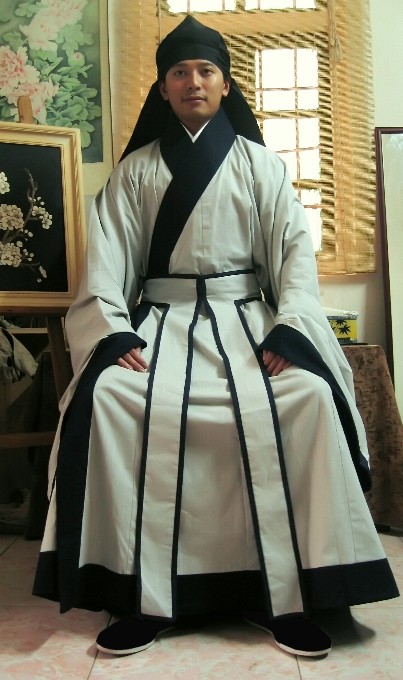#shenyi

Shenyi
Chinese robes for scholars-officials evolving from an ancient robe
Shenyi, also called Deep garment in English, means "wrapping the body deep within the clothes" or "to wrap the body deep within cloth". The shenyi is an iconic form of robe in Hanfu, which was recorded in Liji and advocated in Zhu Xi's Zhuzi jiali《朱子家禮》. As cited in the Liji, the shenyi is a long robe which is created when the "upper half is connected to the bottom half to cover the body fully". The shenyi, along with its components, existed prior to the Zhou dynasty and appeared at least since the Shang dynasty. The shenyi was then developed in Zhou dynasty with a complete system of attire, being shaped by the Zhou dynasty's strict hierarchical system in terms of social levels, gender, age, and situation and was used as a basic form of clothing. The shenyi then became the mainstream clothing choice during the Qin and Han dynasties. By the Han dynasty, the shenyi had evolved into two types of robes: the qujupao and the zhijupao. The shenyi later gradually declined in popularity around the Wei, Jin, and Northern and Southern dynasties period. However, the shenyi's influence persisted in the following dynasties. The shenyi then became a form of formal wear for scholar-officials in the Song and Ming dynasties. Chinese scholars also recorded and defined the meaning of shenyi since the ancient times, such as Zhu Xi in the Song dynasty, Huang Zongxi in the Ming dynasty, and Jiang Yong in the Qing dynasty.
Sat 17th
Provided by Wikipedia
This keyword could refer to multiple things. Here are some suggestions: